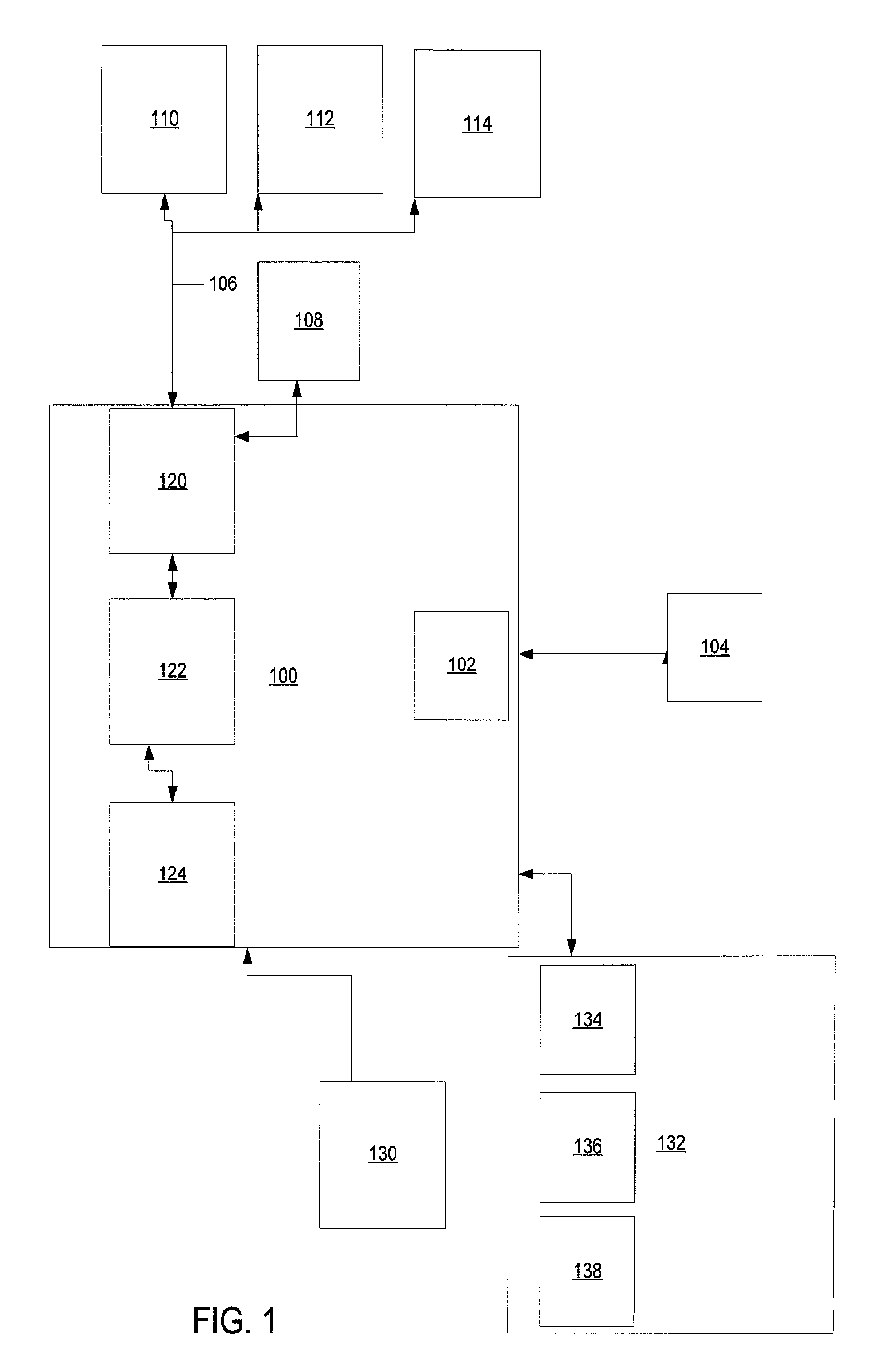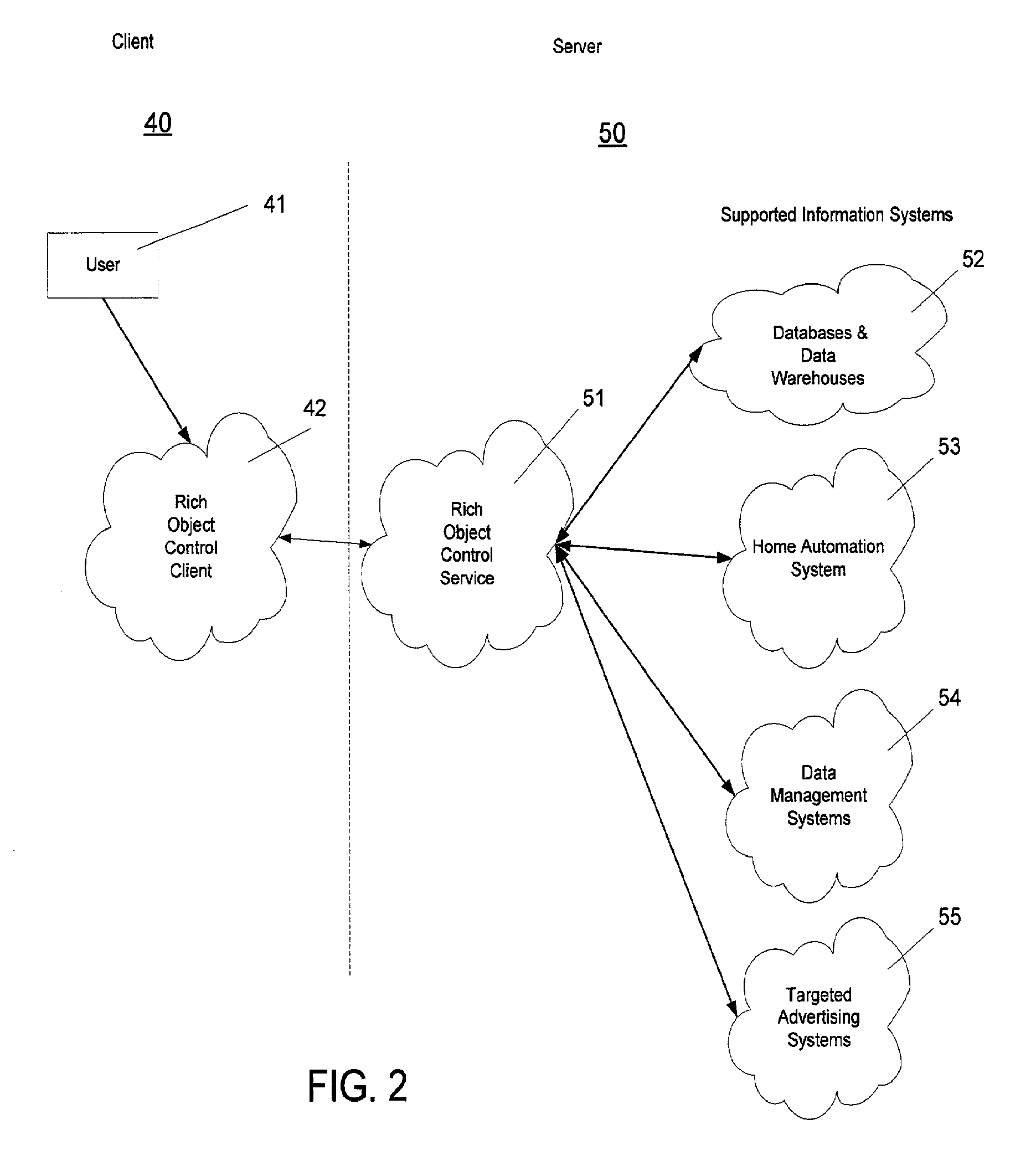System and method for web-based control of remotely located devices using ready on command architecture
a remote control and web-based technology, applied in the field of interfaces, can solve the problems of not adaptable, not extensible to a plurality of controllable devices, not dynamic in their ability, and provide the user a programmable software interface, so as to reduce the size of files
- Summary
- Abstract
- Description
- Claims
- Application Information
AI Technical Summary
Benefits of technology
Problems solved by technology
Method used
Image
Examples
Embodiment Construction
[0045] A description of the preferred embodiments of the present invention will now be presented with reference to FIGS. 1-5.
[0046]FIG. 1 shows an embodiment that comprises an application for building automation, such as a home, although this is not intended as a limitation. In this embodiment the software server software 122 and the client software 124 of the present invention resides on a computer 100 having means, such as a modem or network card 102, for accessing a network 104 such as the Internet, data from which may be used to control elements of the system or to serve as an information source. It is to be understood by one of skill in the art that the word computer should be taken to mean a device comprising a processor, memory, and an operating system capable of accepting input from devices such as keyboard, mouse, or touch pad, and displaying output to devices such as a video monitor or LCD screen.
[0047] The computer 100 also is in electronic communication with an output ...
PUM
 Login to View More
Login to View More Abstract
Description
Claims
Application Information
 Login to View More
Login to View More - R&D
- Intellectual Property
- Life Sciences
- Materials
- Tech Scout
- Unparalleled Data Quality
- Higher Quality Content
- 60% Fewer Hallucinations
Browse by: Latest US Patents, China's latest patents, Technical Efficacy Thesaurus, Application Domain, Technology Topic, Popular Technical Reports.
© 2025 PatSnap. All rights reserved.Legal|Privacy policy|Modern Slavery Act Transparency Statement|Sitemap|About US| Contact US: help@patsnap.com



